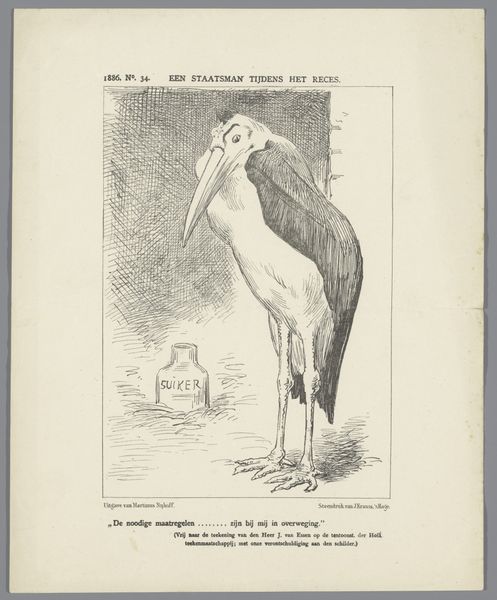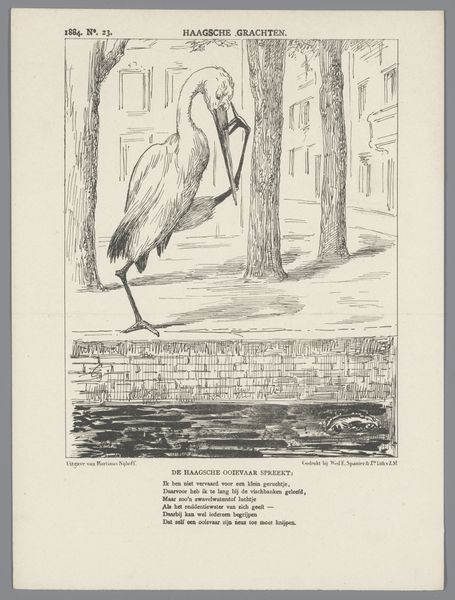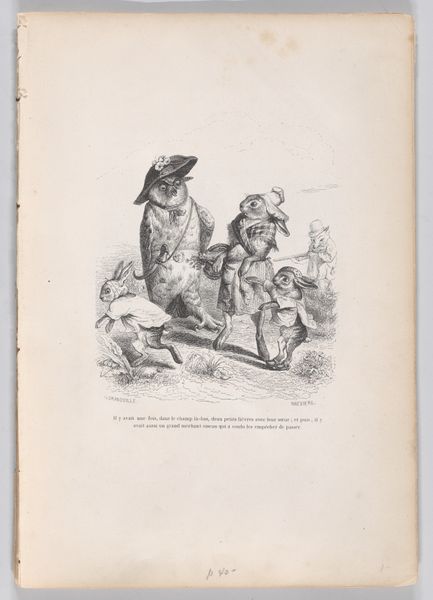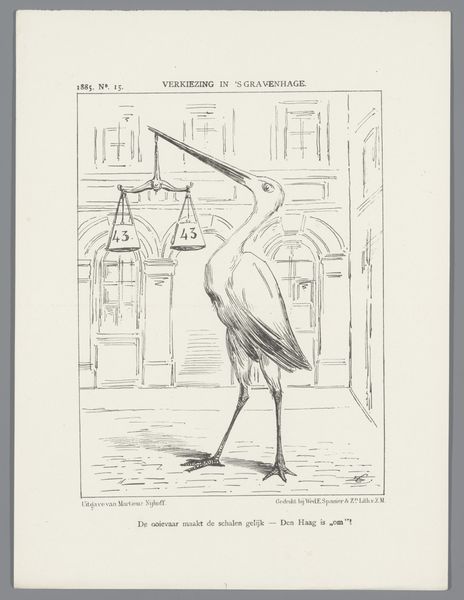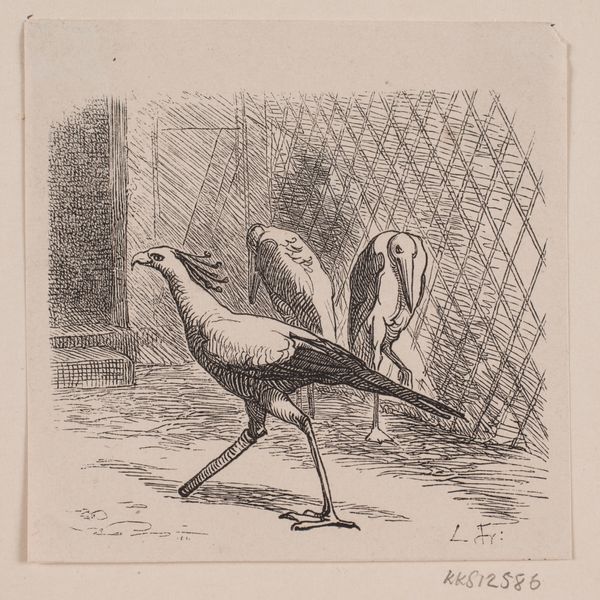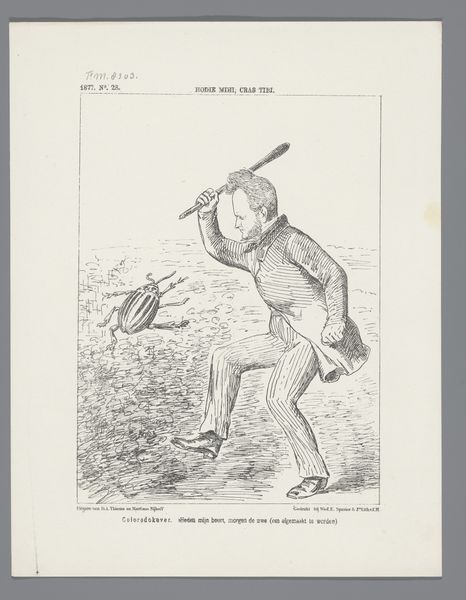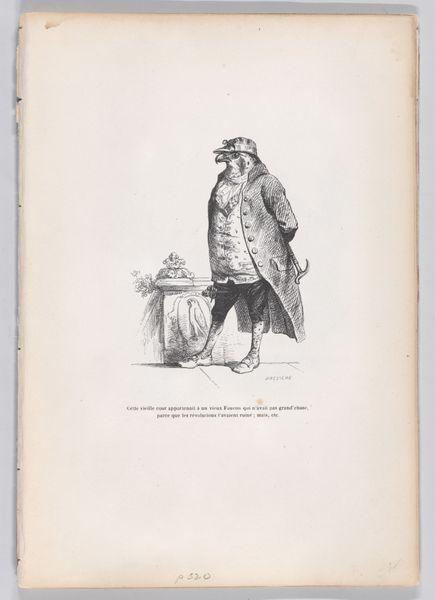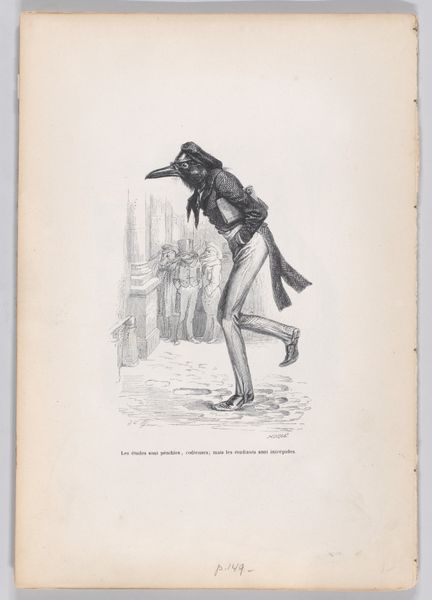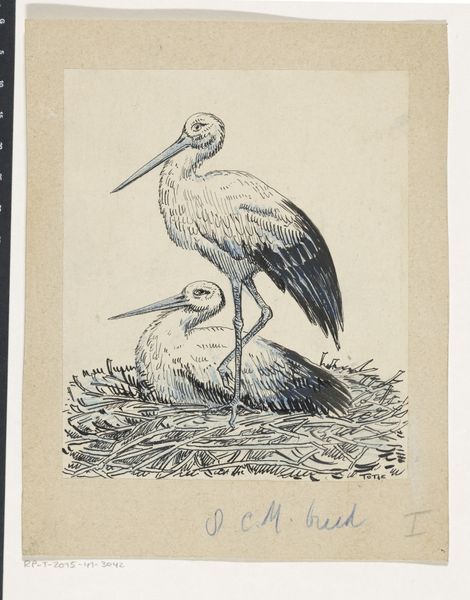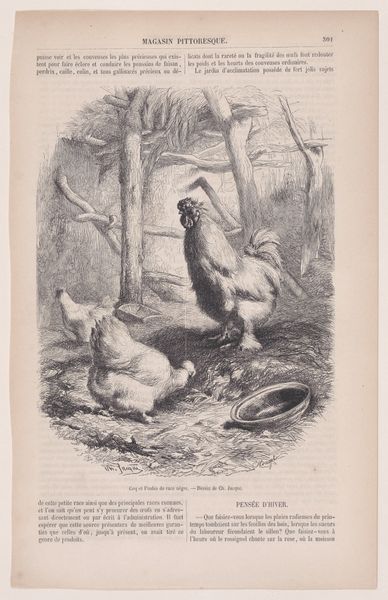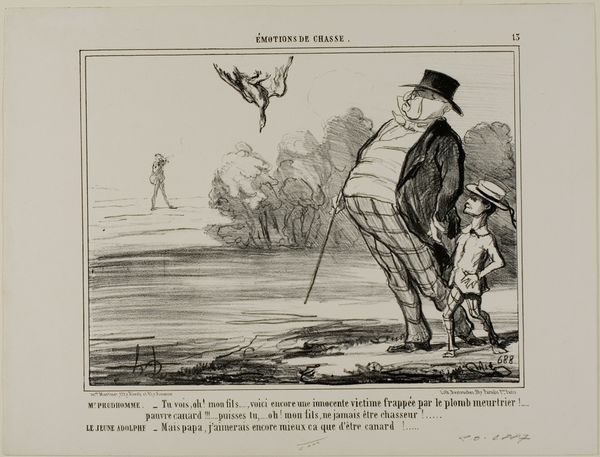
print, engraving
# print
#
caricature
#
old engraving style
#
figuration
#
engraving
Dimensions: height 275 mm, width 215 mm
Copyright: Rijks Museum: Open Domain
Curator: Here we have a print from 1860 by Johan Michaël Schmidt Crans titled "Spotprent op de hedendaagse dichtkunst," a commentary on contemporary poetry of the time. The artist used engraving to render a complex composition filled with satirical symbolism. Editor: My initial reaction? The starkness is what grabs me. That monochrome palette, typical of engravings, really pushes the caricature into sharp focus. It feels like a social jab, aimed precisely at someone... or something! Curator: It’s aimed at the very act of poetry. Notice the figure climbing a ladder to peer into a stork's nest— a clumsy instrument strapped to his back, like a broken poetic meter. There is also a church steeple, a rather traditional symbol, lurking on the lower right corner of the work. Editor: I see what you mean. It speaks to me of the disconnect between the artisan –the one doing the physical labor, even clambering up the ladder– and the act of creating. Look closely at how the lines are etched: almost frantic in places, especially around the nest, versus the relatively smooth face of the man. Was Crans critiquing the actual physical labour of 'making' poetry back in those days? I'd argue yes, a labor that required special instruments like pen and ink and, most importantly, societal positionality, or perhaps religious background. Curator: Possibly. It also might speak to the somewhat unnatural or forced effort required to reach inspiration, indicated by the nest high above, in this case perhaps mocking what he perceived as affected verse. That awkward angle, the stork practically force-feeding the nestlings... Editor: Exactly! Consumption and production are right in your face. That stork isn't gently providing; it's almost aggressively imposing, hinting at mass produced and state sanctioned work. Even down to the very material qualities of the print: the type of paper and ink used, point toward something that could be endlessly produced and distributed as an artwork. Curator: An astute reading. The whole piece bristles with that late 19th-century tension: tradition versus progress, genuine sentiment versus hollow imitation. Editor: Leaving me pondering whether all art is truly just labor cleverly disguised, no matter how aesthetically moving or elevated the finished object. It really makes you reconsider who poetry and other literary publications of that period served! Curator: I'm left contemplating the endless cycle of criticism. Every generation scrutinizing the art of its predecessors... and of its own.
Comments
No comments
Be the first to comment and join the conversation on the ultimate creative platform.
